
TL;DR Version
- Show people a photo of your product
- Ask them what they would type into a search engine if they were looking for it
- Discover new attributes, concepts and synonyms you haven’t considered before
- Expand your keyword research by including all new terms
- Prioritise newly discovered queries by importance, relevance and volume
- Include top priority items in your copy, or define new landing pages if appropriate
You don’t know what you don’t know.
Marketers are well aware of pros and cons of so called “long tail” queries usually implying, longer, more complex search terms. Google representatives have stated that around 15% of daily queries have never been asked before. That’s roughly 500 million new things!
“Every single day 15 per cent of the questions people ask of Google are questions we’ve never seen before,” John Wiley, Google
In addition to completely new search terms there are queries that may at first appear unusual or unrelated to our content. It’s what people search for when they’re unfamiliar with a subject, product, service or a brand. These “new tail” queries represent an enormous opportunity.
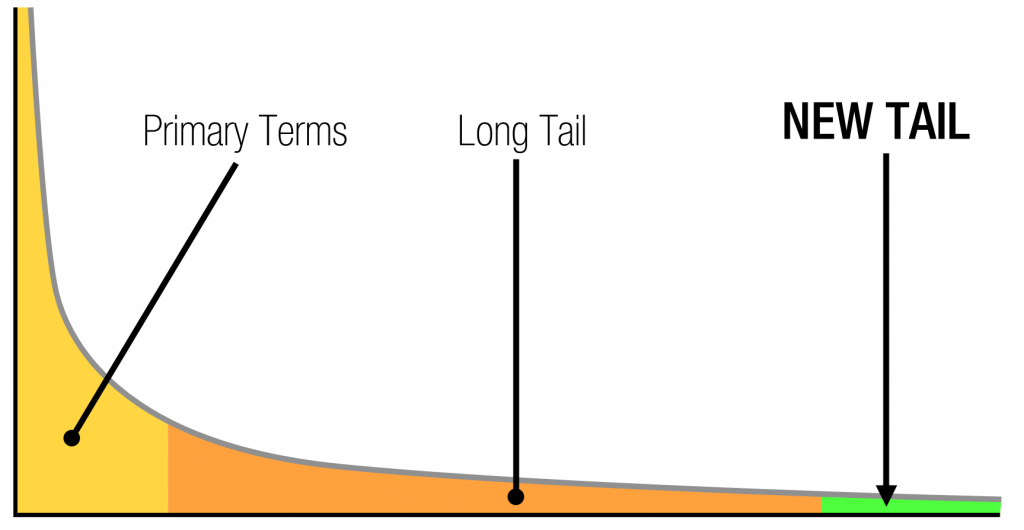
How do new tail queries look like?
No, they’re not even longer than long tail search terms. In fact they could be quite short. One thing that characterises them is that they almost always belong to the initial stage of someone’s research. For example, Zoysia Tenuifolia is my favourite type of grass.
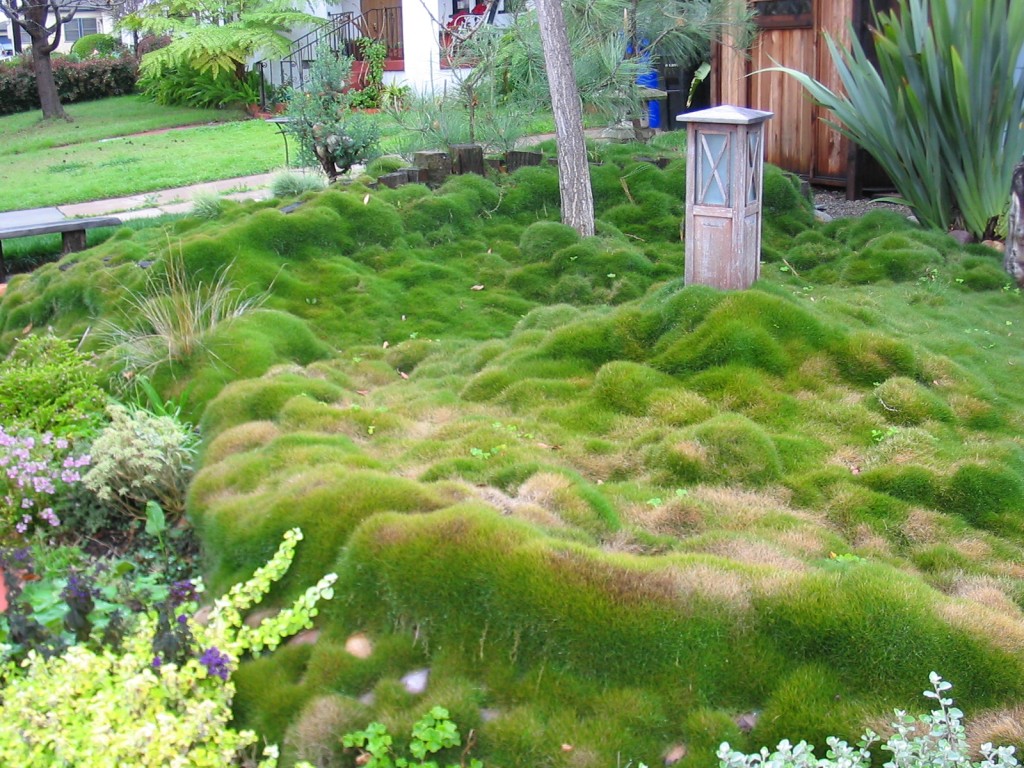
I’ve seen it a couple of times around Brisbane but didn’t know its name, resulting in series of new tail queries including:
- Grass near the Queensland State Library
- Grass growing in the Brisbane Botanical Gardens near Mt Coot-Tha
- Exotic grass
- Moss-like grass
- Grass from Hobbitville
- Ornamental grass
- Architectural grass
I’ve used terms which include location, application, properties and even analogy. None of the websites that sell this grass actually mention any of the above terms but there are perhaps many people looking for it in a similar way. A missed opportunity!
Another example is when people seek solutions to their problems instead of describing products. This is often the case with new or little known products that are only just attempting to become a household name.
What do you call this?

Crowdsourcing New Tail Keyword Discovery
The best way to discover new tail keywords is to simply ask a lot of people what they would search for if they were looking for your product or service. Show them a product and ask them to find it in Google. I use Google Surveys for this but other platforms such as Survey Monkey will do just fine.
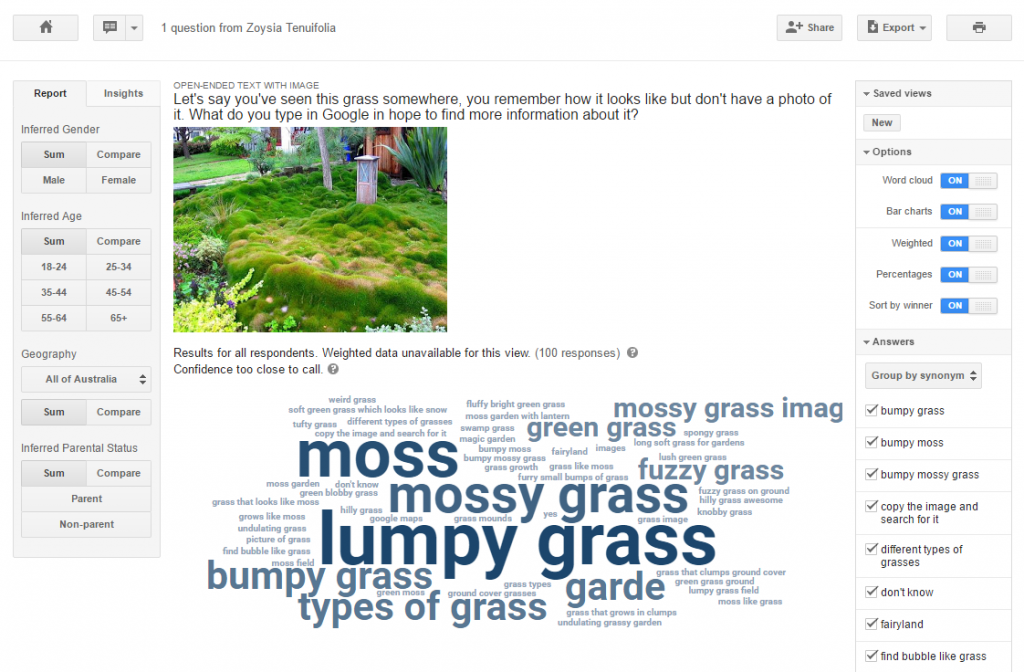
For around $10 you can survey 100 people, resulting in numerous new descriptions for the product (gras in this case) including terms like: lumpy, mossy, fuzzy, bumpy, mounds, undulating, furry, bubble, clumpy, blobby, hilly, lush, magic, fairyland, knobby, soft, spongy, swamp, tufty and weird. Ensure you’re using “image + open-ended” mode where respondents are required to type in their answer instead of selecting pre-set answers.
Content analysis of the top result in Google for this type of grass showed only 35% match with the survey data. A total of 24 keywords matched both the page and survey results with 44 missed keyword opportunities.
The analysed page heavily focused on “No Mow” element of this grass, which is an example of an internal information bubble. The site owner perhaps believes that their customers care mainly about the fact that this grass does not require mowing. Our data shows that there exist a whole new range of keywords this business hasn’t considered.
| Terms | Match | Missed |
| 68 | 24 | 44 |
Matching Keywords
Matching keywords in the highest ranking document are of rather general nature and don’t appear to be useful in early stage research and concept discovery.
| Keyword | Occurrences | % |
| grass | 71 | 32.27 |
| green | 8 | 3.64 |
| of | 6 | 2.73 |
| like | 6 | 2.73 |
| garden | 5 | 2.27 |
| grasses | 3 | 1.36 |
| image | 3 | 1.36 |
| that | 3 | 1.36 |
| ground | 3 | 1.36 |
| for | 2 | 0.91 |
| on | 1 | 0.45 |
| it | 1 | 0.45 |
| in | 1 | 0.45 |
| cover | 1 | 0.45 |
| bright | 1 | 0.45 |
| search | 1 | 0.45 |
| with | 1 | 0.45 |
| which | 1 | 0.45 |
| growth | 1 | 0.45 |
| 1 | 0.45 | |
| and | 1 | 0.45 |
| long | 1 | 0.45 |
| lawn | 1 | 0.45 |
| the | 1 | 0.45 |
New Tail Keyword Opportunities
Look at the table below. None of those new tail keywords were found on the highest ranking document in Google. This is an opportunity to enrich existing content, making it more descriptive and aid discovery. You will notice that not all of these keywords make sense as content additions, so I categorise them into three groups:
- Content improving (bold): Possible additions to existing content.
- Irrelevant (
Strikethrough): Keywords not helpful in any way. - Other ideas (italic): Ideas for new topics or modes of discovery (e.g. image search).
| Keyword | Occurrences | % |
| moss | 18 | 8.18 |
| lumpy | 12 | 5.45 |
| mossy | 7 | 3.18 |
| types | 5 | 2.27 |
| bumpy | 4 | 1.82 |
| fuzzy | 3 | 1.36 |
| undulating | 2 | 0.91 |
| images | 2 | 0.91 |
| looks | 2 | 0.91 |
| soft | 2 | 0.91 |
| clumps | 2 | 0.91 |
| hilly | 2 | 0.91 |
| fairyland | 1 | 0.45 |
| awesome | 1 | 0.45 |
| different | 1 | 0.45 |
| small | 1 | 0.45 |
| blobby | 1 | 0.45 |
| weird | 1 | 0.45 |
| snow | 1 | 0.45 |
| mounds | 1 | 0.45 |
| fluffy | 1 | 0.45 |
| furry | 1 | 0.45 |
| bumps | 1 | 0.45 |
| bubble | 1 | 0.45 |
| knobby | 1 | 0.45 |
| magic | 1 | 0.45 |
| picture | 1 | 0.45 |
| swamp | 1 | 0.45 |
| lush | 1 | 0.45 |
| spongy | 1 | 0.45 |
| tufty | 1 | 0.45 |
| groundcover | 1 | 0.45 |
Driving Organic Traffic Using New Tail Keywords
Once discovered, new tail keywords are simply added to any existing content or may warrant a creation of whole new pages. As you can see from the graph below, new tail keywords break into a long tail pattern themselves:
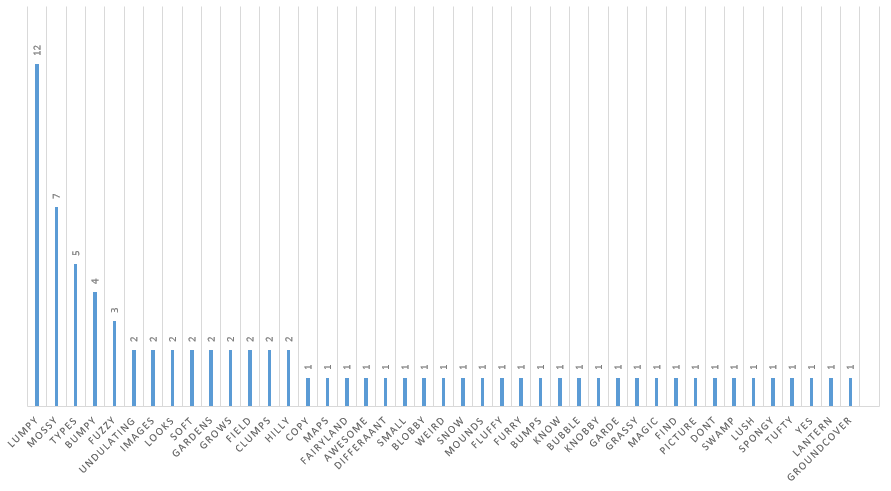
This meta-keyword-ception isn’t here to give you a headache. Its practical application is in keyword clustering and prioritisation of new themes or concepts when considering what to introduce into your content.
In order to drive new organic traffic, the grass page we analysed could add a new section which describes the visual properties of the product using natural language. Same content page, no extra authority building, more organic traffic. Combine this with optimising your alt=”attribute” to gain additional traffic in image search.
Another opportunity would involve creation of a new article which discusses the types of grass with a gallery of images. This page would be helpful to those starting their research with a broad new tail query such as “types of grass” and those who prefer to dive into image search instead.
Keyword Extrapolation
A more advanced solution would involve running tangential keyword research by pursuing each new concept vector, extrapolating from the existing pool of keywords in a derivative manner. Since this may result in a large number of new tail search terms it would be practical to evaluate keyword importance based on metrics such as search volume, commercial value, conversion rates and keyword difficulty.
Note: As tempting as it may be, don’t stuff every possible keyword into your product pages. Contents’ ultimate purpose is lost if it’s unreadable by human beings.
Demographics
Google Surveys output contains valuable demographic data which can be used to further cater content to your target audience. For example:
- Younger people tend to search for “bumpy” more than older people.
- Older people tend to search for “mossy” more than younger people.
- Males tend to search for types of grasses rather than describing its property.
- Females tend to search for specific aesthetic properties instead of broad searches.
New Tail Keyword Clustering
Managing a 100-respondent survey isn’t a big deal. You can probably use Google’s own grouping tool and creating/saving your own views. When dealing with thousands of answers I recommend exporting to CSV and working with it in a spreadsheet instead.

Column A is a raw list of responses. B:B through to H:H are data validation fields drawing from values listed in L:L. These are entered by a human, an easy Fiverr task. Note that a single open-ended response can in this case be assigned multiple tags (e.g. Bumpy mossy grass = “Bumpy”, “Mossy”) so it’s appropriate for the reviewer to tag a single answer by any number of categories listed in L:L.
Ignore any keywords already contained within the page copy, remember, we’re working on new tail keywords only. Things that we haven’t thought of before. In this instance terms like “grass” and “garden” are simply being ignored.
Column N fields count number of instances each term is tagged in the B:B – H:H validation fields, =COUNTIFS(B$1:H$100,L1). Column M is just a percentage of how frequently the tag has been used throughout the document.
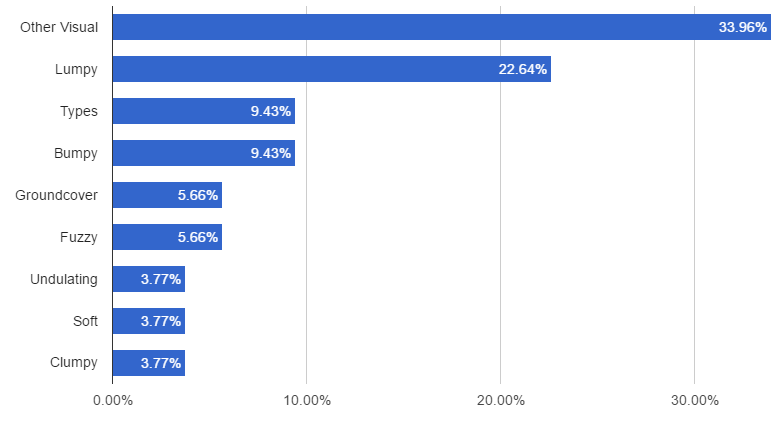
The list above is a great starting point when deciding about potential keyword introductions (e.g. “soft”), new sections (visual properties) or entire pages (types of grasses). Here’s a handy template to help you with categorisation.
Have fun!
Bonus Video
John Mueller from Google comments on first-time queries, RankBrain, Search Console one-off keyword obscuring, Google’s understanding of unusual queries with synonyms and semantics. It starts at 1:17:52.
Dan Petrovic, the managing director of DEJAN, is Australia’s best-known name in the field of search engine optimisation. Dan is a web author, innovator and a highly regarded search industry event speaker.
ORCID iD: https://orcid.org/0000-0002-6886-3211


